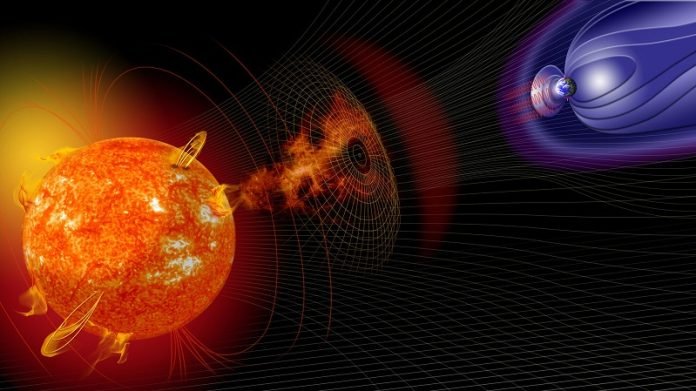
Approximately 14,300 years ago, an incredible event lit up the sky: the largest solar storm ever recorded unleashed its power on our planet.
Surprisingly, the stories of this astronomical incident are being told not through ancient texts, but through the rings of ancient trees found in the French Alps.
A multinational team of scientists meticulously studied these trees and unearthed a crucial warning from the past about the potential threat that solar storms can pose to our modern, tech-driven world.
The team of researchers, hailing from various international institutions, discovered that this ancient solar tempest was so immense that it eclipsed the size of any solar storm we’ve seen in more recent history.
Their research, published in the “Philosophical Transactions of the Royal Society A: Mathematical Physical and Engineering Sciences,” sheds light on both our sun’s historical behaviors and the potential risks its activity can pose to Earth.
Edouard Bard, Professor of Climate and Ocean Evolution, and his team, observed this ancient storm’s imprints by analyzing the subfossil trees located on the eroded banks of the Drouzet River, near Gap, in the Southern French Alps.
Subfossils are remains that have not fully fossilized, and these trees, though ancient, have maintained their ring patterns for researchers to study today.
The scientists closely examined each tree-ring, tracing back the tree’s growth year by year, and found an unusual spike in radiocarbon levels that occurred precisely 14,300 years ago.
To confirm their suspicions that a solar storm caused this anomaly, they compared their data with measurements of beryllium (another element) found in Greenland ice cores.
The results painted a clear picture: a gigantic solar storm must have bombarded the Earth with a flurry of energetic particles, influencing the radiocarbon production in the atmosphere.
Solar storms involve massive outbursts of energy from the sun, in the form of solar flares and coronal mass ejections, which can emit powerful particles into space.
When the Earth is in the path of these particles, they can interact with our atmosphere and even cause disruptions to our magnetic field.
Professor Bard explains that radiocarbon, typically formed in the upper atmosphere through reactions initiated by cosmic rays, can also experience spikes due to these energetic particles from the sun.
While we have known that the sun can behave extremely, through events like solar flares and mass ejections, understanding the scale and potential impacts of these episodes is crucial.
Why is this discovery so critical for us in the modern day?
If a solar storm of this magnitude were to occur today, it would have devastating consequences for our technologically-dependent society.
Telecommunications, satellite systems, and even our electricity grids could be wiped out, costing billions and leaving us without the technological conveniences we rely on daily.
Professor Tim Heaton from the University of Leeds highlights the severe implications such solar storms could have: widespread and enduring blackouts, irreparable damage to satellites essential for navigation and communication, and substantial radiation risks to astronauts in space.
The learnings from this ancient event emphasize the critical necessity to further understand solar storms and build resilience into our technological systems to shield them from future solar outbursts.
To understand the sun’s potential future behavior, we must look back at its past activities, and tree-ring radiocarbon provides a vital tool for this exploration.
Although the exact mechanisms, frequency, and predictability of these solar storms remain elusive and uncharted, every new discovery adds a piece to the puzzle, offering insights to safeguard our future against the celestial powers of the sun.
In closing, while modern technology brings an immeasurable wealth of benefits, this remarkable discovery serves as a stark reminder from our ancient, silent observers – the trees – about the vulnerabilities we need to prepare for, safeguarding our civilization against the mighty and mysterious activities of our closest star.
Follow us on Twitter for more articles about this topic.
Source: University of Leeds.



